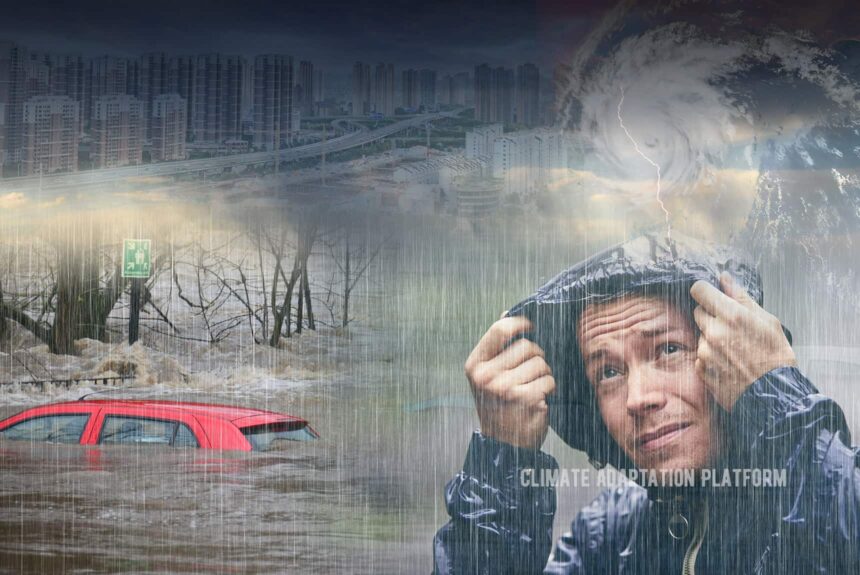In June 2022, devastating floods hit China, Bangladesh and India. Does climate change have a role in these impactful events, and what can these places do to reduce their impacts and losses?
The floods in central and southern China are the worst they have experienced in decades. It forced the evacuation of tens of thousands of people to leave their homes, damaged 500,000 homes, collapsed roads, and swept houses away, according to a report from The Guardian.
In India and Bangladesh, floods and landslides have affected millions of people. More than 100 people died, and entire communities were destroyed. According to a CNN report, this year’s flooding is the worst seen by the region in years as extreme weather events are becoming more frequent under climate change.
Mingfang Ting, a research professor at Columbia Climate School’s Lamont-Doherty Earth Observatory, points to several large-scale climatic conditions that could be driving these intense precipitations in China and South Asia.
Talking to Columbia Climate School’s Newspaper, State of the Planet, Ting notes that the region is in the middle of the monsoon season, and hence heavy rains are expected this time of the year. However, the intensity of these rainfalls might also be influenced by the ENSO, a climate phenomenon with two opposite phases – “El Niño” and “La Niña,” which can strongly affect temperature and precipitation.
“La Niña is definitely one culprit here. During La Niña, the ocean is warmer in the western tropical Pacific, or the warm pool region, allowing more abundant warm, moist air to be transported toward southern China when the weather system is aligned. Another potential contributor is the Indian Ocean Dipole, which is in a slightly negative phase at the moment, which also makes the western tropical Pacific warmer than normal.”
“The same concept applies to Bangladesh and Northeastern India, where flooding is also happening this year. However, the negative phase of the Indian Ocean Dipole is actually suppressing monsoon rainfall in Central India, though La Niña does increase the Indian monsoon rainfall similar to monsoons in China and Bangladesh.”
China’s recent initiative to improve its air quality has also created more heavy rains. “Aerosols act to reduce rainfall and make clouds stay in the atmosphere rather than precipitate, so cleaning up the air will have the opposite effect, increasing the intensity of rainfall”, Ting says.
But what about the contributions from climate change?
Kai Kornhuber, who studies extreme weather at Lamont-Doherty Earth Observatory, said that the severe rainfall and flooding are compatible with what scientist expects in a climate change world.
“The first order physical relationships between a warmer planet and more extreme rainfall are well understood: as warmer air can hold more moisture, more extreme rainfall is to be expected”, Kornhuber notes.
Kornhuber and his colleagues published a paper in Nature Urban Sustainability, “Enhanced urban adaptation efforts needed to counter rising extreme rainfall risks”, describing the series of record-breaking precipitation and floods seen in various parts of the world. The increasing frequency and intensity of extreme events under climate change are also escalating socio-economic impacts, particularly in urban and peri-urban areas.
To mitigate these impacts, Hemmati, Kornhuber, and Kruczkiewicz (2022) note that urban areas need to improve their resilience and climate adaptation plans, including the risk of extreme rainfall events and sudden-onset events. Doing so will close critical gaps in planning for devastating rainfall events, which are becoming the norm.
The paper provides the following recommendation on how urban areas can go about this. “The development of specialized resilience and preparedness plans, the development of services and toolkits, and integrating science with action, particularly for extreme rainfall events. Doing so will make progress towards closing a critical gap in planning for record-breaking rainfall events that have increasingly become the norm.”
The paper aims to give insight to community leaders, policymakers, city officials and stakeholders to achieve sustainable and resilient cities for all inhabitants starting with the most vulnerable and underserved population members.
Sources:
Fecht, S. (2022, June 22). What’s Causing the Devastating Floods in China, India, and Bangladesh? State of the Planet. Retrieved from https://news.climate.columbia.edu/2022/06/22/whats-causing-the-devastating-floods-in-china-india-and-bangladesh/
Hemmati, M., Kornhuber, K. & Kruczkiewicz, A. Enhanced urban adaptation efforts needed to counter rising extreme rainfall risks. npj Urban Sustain 2, 16 (2022). https://doi.org/10.1038/s42949-022-00058-w



Leave a Reply